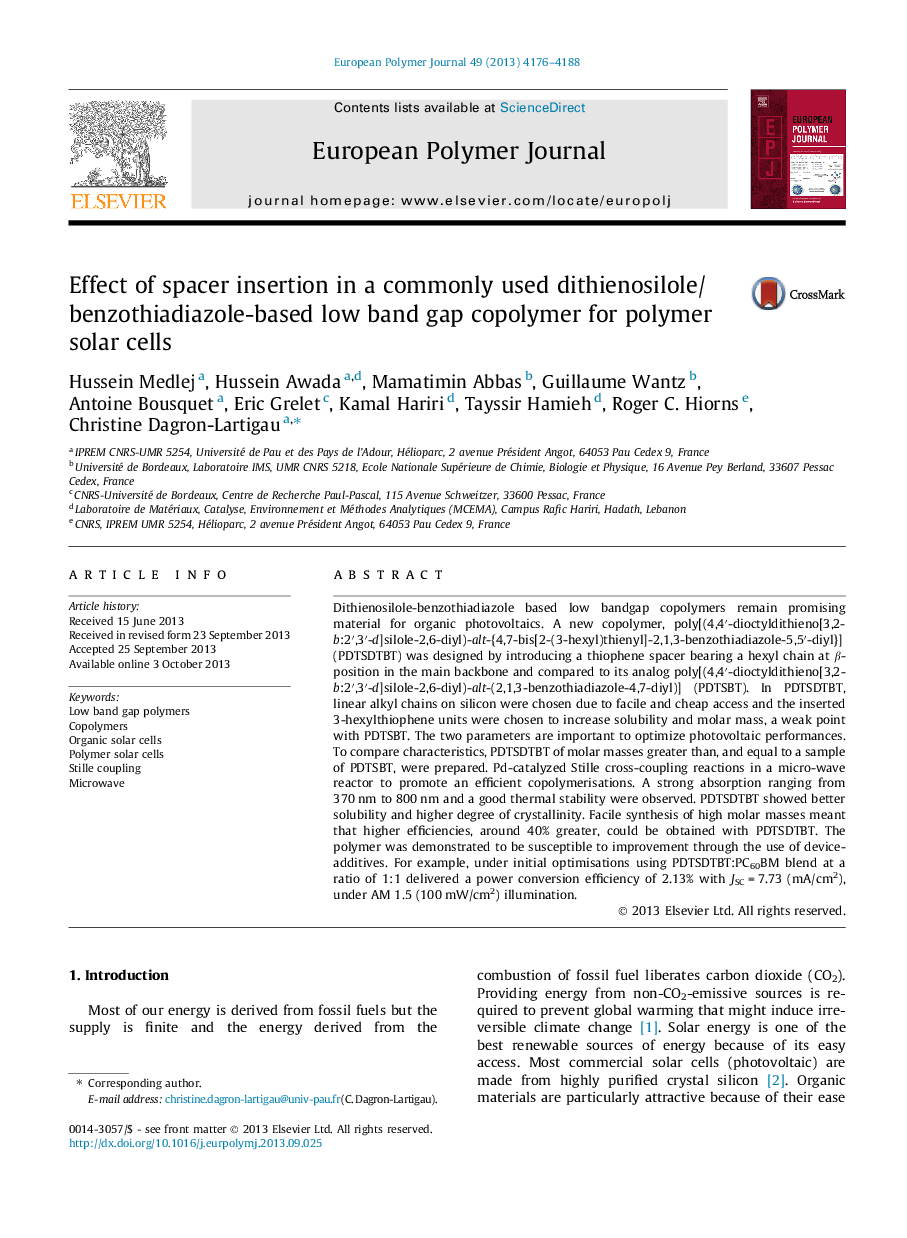| کد مقاله | کد نشریه | سال انتشار | مقاله انگلیسی | نسخه تمام متن |
|---|---|---|---|---|
| 1401962 | 984727 | 2013 | 13 صفحه PDF | دانلود رایگان |

• Alkylated thiophene spacer tunes photovoltaic properties.
• Linear octyl chains on Si atom affords easy synthesis of dithienosilole monomer.
• Increasing molar masses of low bandgap polymers increases efficiencies.
• Thermal annealing or additive increases efficiencies.
Dithienosilole-benzothiadiazole based low bandgap copolymers remain promising material for organic photovoltaics. A new copolymer, poly[(4,4′-dioctyldithieno[3,2-b:2′,3′-d]silole-2,6-diyl)-alt-{4,7-bis[2-(3-hexyl)thienyl]-2,1,3-benzothiadiazole-5,5′-diyl}] (PDTSDTBT) was designed by introducing a thiophene spacer bearing a hexyl chain at β-position in the main backbone and compared to its analog poly[(4,4′-dioctyldithieno[3,2-b:2′,3′-d]silole-2,6-diyl)-alt-(2,1,3-benzothiadiazole-4,7-diyl)] (PDTSBT). In PDTSDTBT, linear alkyl chains on silicon were chosen due to facile and cheap access and the inserted 3-hexylthiophene units were chosen to increase solubility and molar mass, a weak point with PDTSBT. The two parameters are important to optimize photovoltaic performances. To compare characteristics, PDTSDTBT of molar masses greater than, and equal to a sample of PDTSBT, were prepared. Pd-catalyzed Stille cross-coupling reactions in a micro-wave reactor to promote an efficient copolymerisations. A strong absorption ranging from 370 nm to 800 nm and a good thermal stability were observed. PDTSDTBT showed better solubility and higher degree of crystallinity. Facile synthesis of high molar masses meant that higher efficiencies, around 40% greater, could be obtained with PDTSDTBT. The polymer was demonstrated to be susceptible to improvement through the use of device-additives. For example, under initial optimisations using PDTSDTBT:PC60BM blend at a ratio of 1:1 delivered a power conversion efficiency of 2.13% with JSC = 7.73 (mA/cm2), under AM 1.5 (100 mW/cm2) illumination.
Figure optionsDownload as PowerPoint slide
Journal: European Polymer Journal - Volume 49, Issue 12, December 2013, Pages 4176–4188